Relatively new Canadian brand Bluesound brand has built an enviable reputation in the field of modern digital music playback with modern with its incredibly efficient and original devices.
The Bluesound range consists primarily of Hi-Res Network Players, like the Node and Node 2 models, and sometimes with a hard drive, like with the Vault and Vault 2 models. Bluesound also manufactures the Powernode (and Powernode 2) amplifiers as well as numerous speakers, including the Pulse, Pulse Mini, Pulse Flex, and a des amplificateurs, Powernode et Powernode 2, et plusieurs enceintes, Pulse, Pulse Mini, Pulse Flex, and a system with two speakers and a subwoofer, aptly named Duo.
It is indeed the Pulse Flex speaker model that is the subject of this benchmark. This very compact model includes a network player that is compatible with Hi-Res audio files (24-bit up to 192 kHz) and electronic amplification. The speaker can be controlled from href="http://www.bluesound.com/en-eu/downloads/?cl" the Bluesound application, available for iOS and Android (both tablets and smartphones), as well as for Mac and PC, and allows for streaming in Hi-Res on Qobuz.
This speaker performs well indoors when plugged in, as well as outdoors (powered by the optional battery pack).
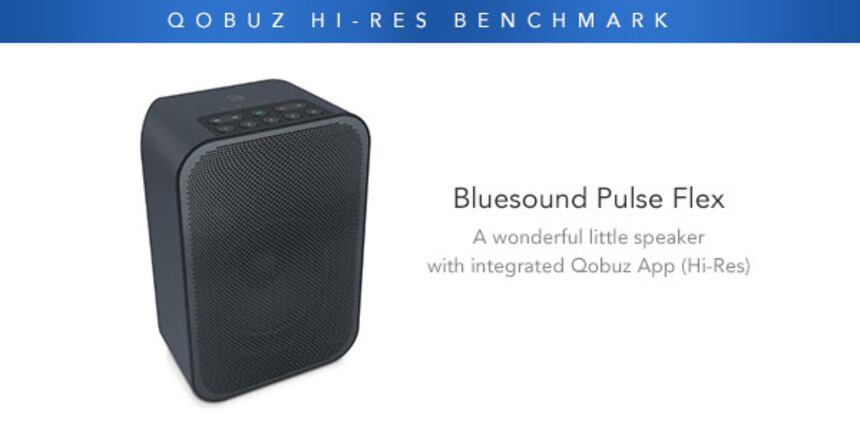
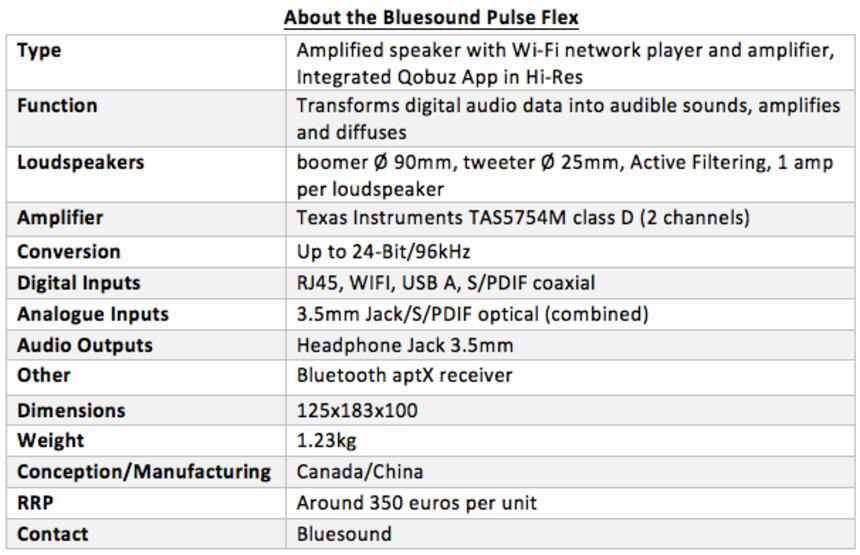
Appearance
The Bluesound Pulse Flex is available in a white or black finish, and comes in a very compact modern-looking housing with rounded horizontal edges.
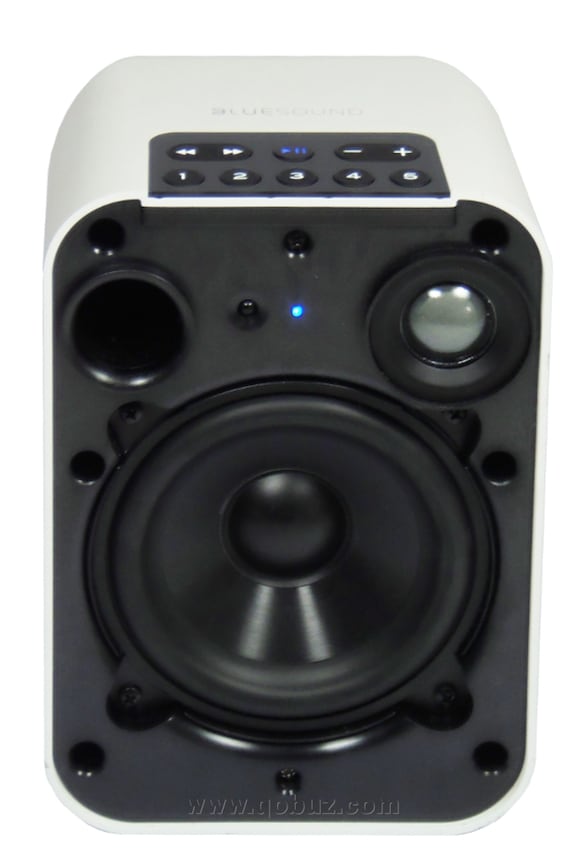
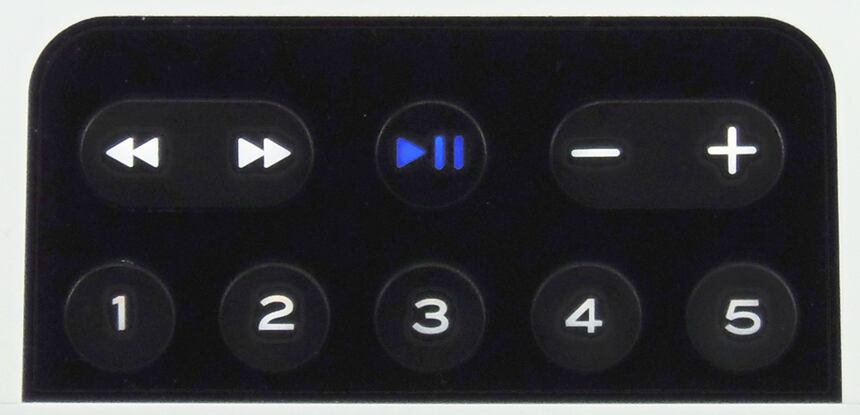
Once removed from the protective micro-perforated grid on the front, one discovers the speakers and the multicolored LED, which serves as an indicator of the speakers' current status, read in conjunction with the pause/play button on the top. To the left of this LED we have an infrared diode that allows for programming of your TV remote control which will then be able to control the speaker. The diode also functions as a receptor for the memorized orders of the remote control.
The top panel of the speaker includes a series of buttons that give access to volume control, track skipping (back and forward) and five assignable drives.
At the rear of the Pulse Flex we have a series of different connection options.
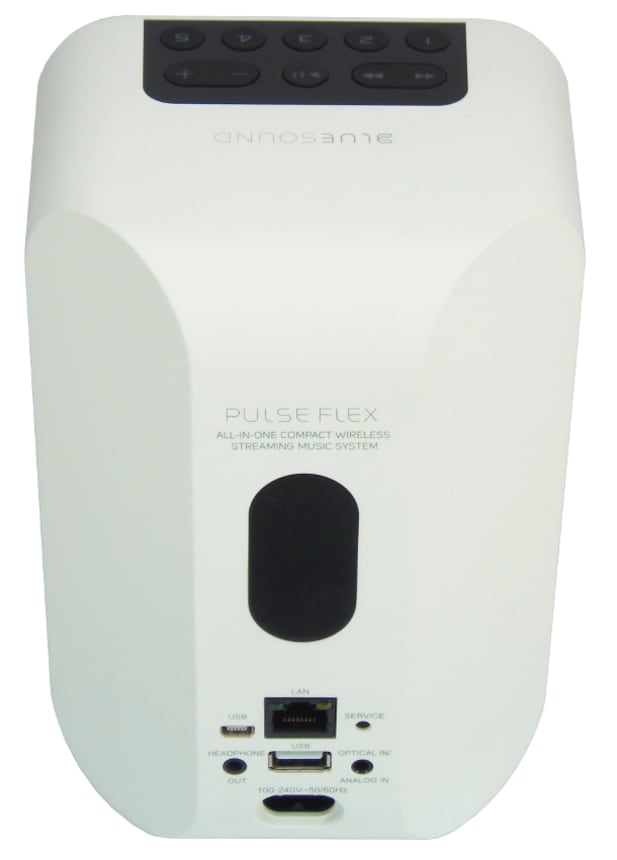
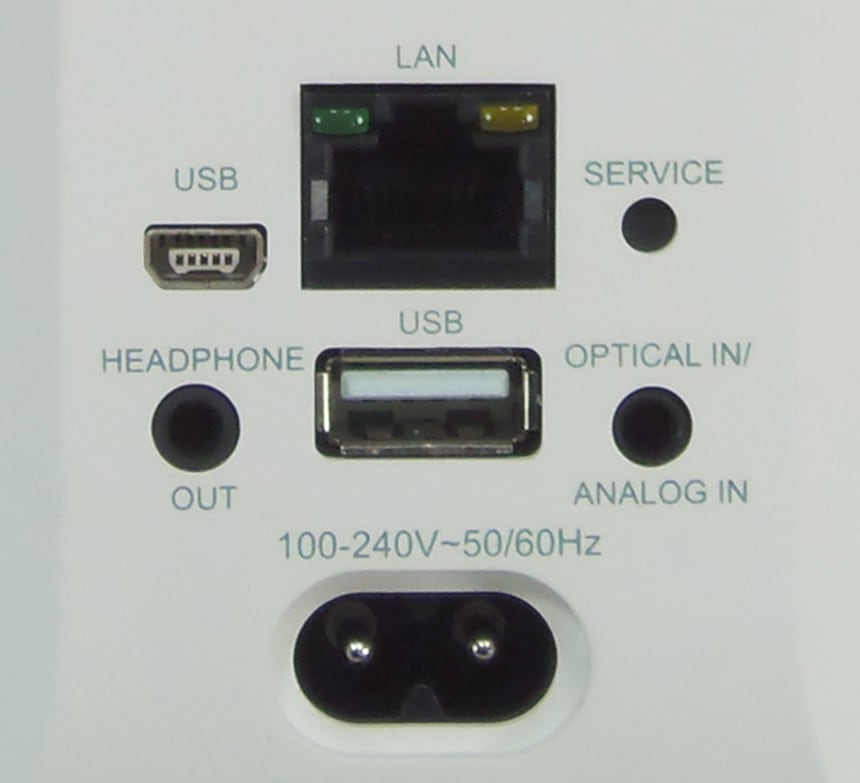
Bluesound have deliberately provided an angled sector cord so that the device can be placed along a wall without having to bend it. The grid connection will be via the RJ45 connection or WiFi. We can connect a USB storage device to the USB A connector for this purpose. The 3.5mm jack input on the left allows you to connect a headset, and on the right we find a model combining a stereo analog input with an optical digital input. A micro USB jack is for maintenance in association with the button marked Service.
Composition
The midrange loud speaker is a model of 9cm diameter made from polypropylene membrane. The stamped metal frame receives a powerful ferrite magnet (7cm in diameter).
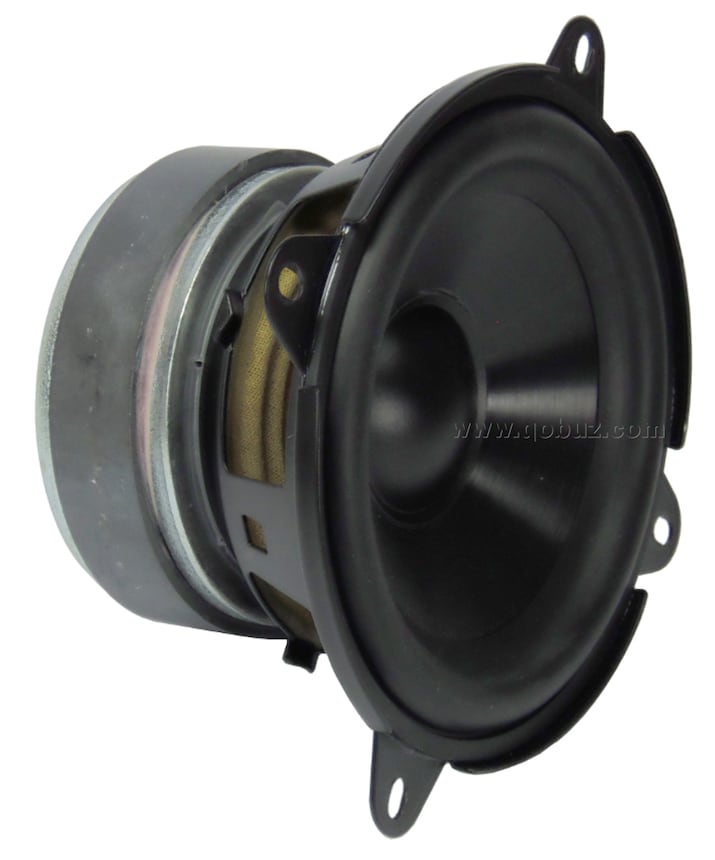
It contains bass-reflex with a vent opening in front, symmetrical to the tweeter, which is a soft dome model of 25mm diameter.
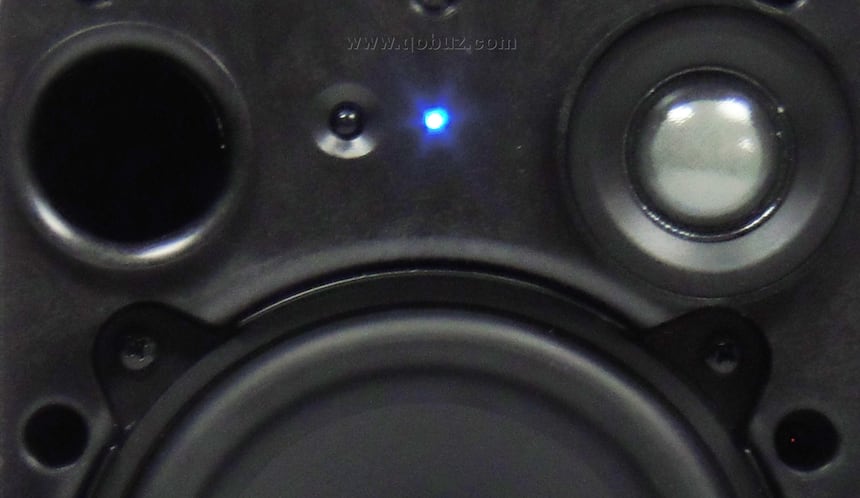
As shown below, the electronics enclosure of the Bluesound Pulse Flex occupies three inner faces of the cabinet, which is made of injected resin.
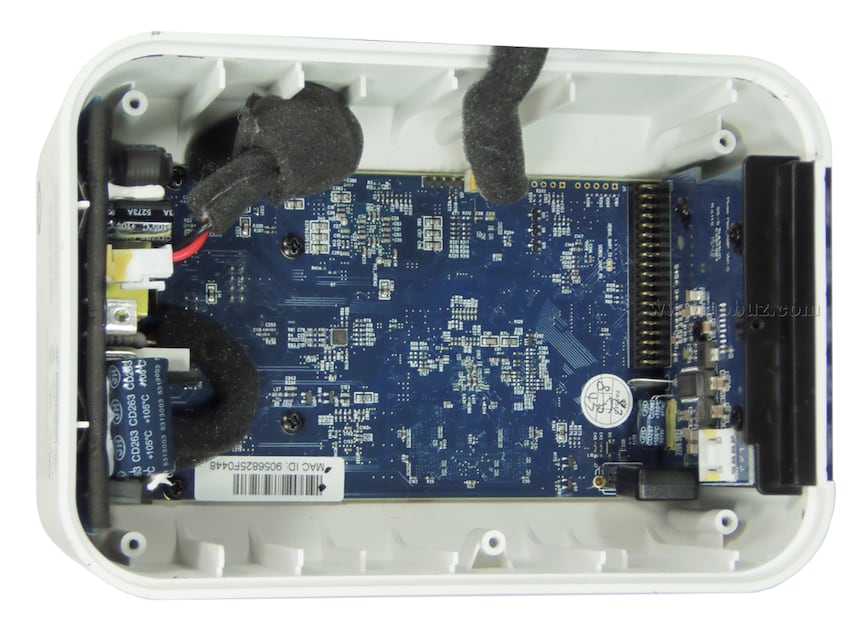
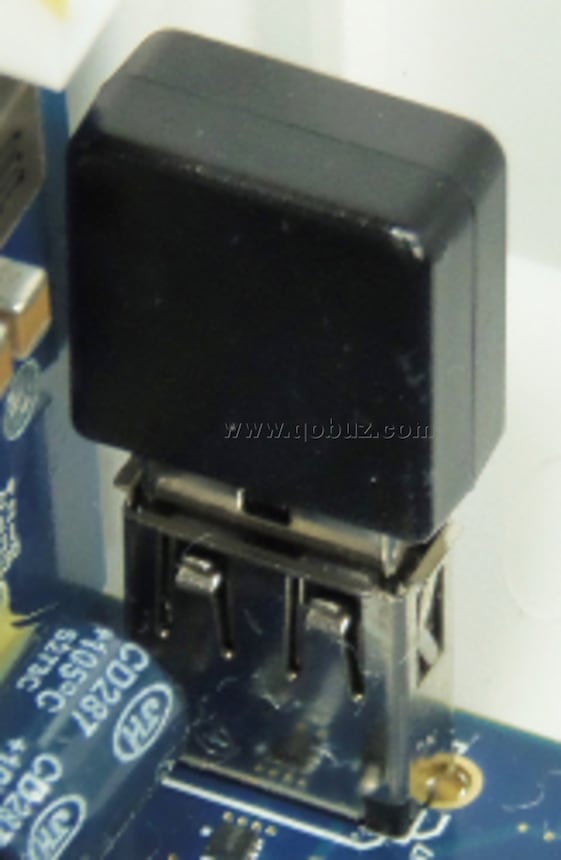
The switch power supply takes its place in the lower part of the cabinet. The main circuit occupies the bottom, while the top face of the cabinet is reserved for the amplification circuit. We dually note that, on the main circuit, the WiFi receiver takes the form of a USB dongle UNLD-93F (manufactured by Unex), and why not?
Few active components on the visible face of the this main circuit, but most notable an SMSC8720A Ethernet transceiver manufactured by Microchip.
The other side makes up for this quickly as it contains many integrated circuits, beginning with micro electronics controller (a Microchip PIC32MX150F128 model, bottom right on the visual below), and to the left of which we find a Micron Technology FLASH drive.
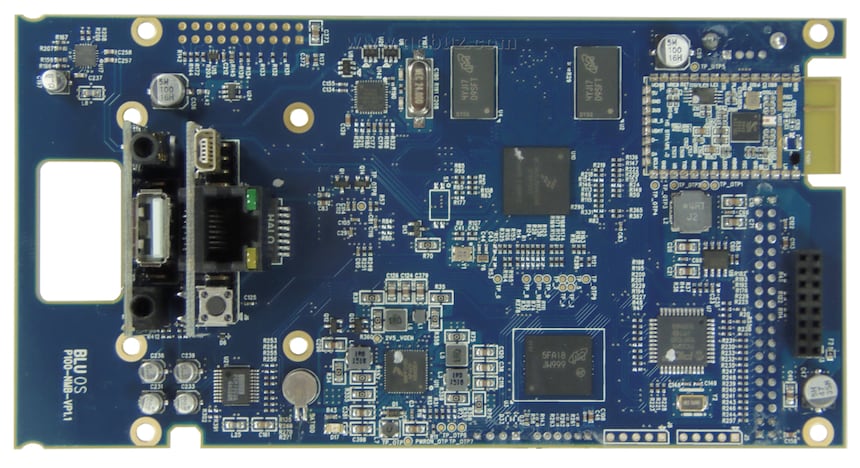
On the top right hand side of the the circuit we observe a Bluetooth aptX receiver module, manufactured by CSR (Cambridge Silicon Radio), the inventor of aptX coding module with a CSR8645 chip. Just left of it, the powerful Freescale MCIMX6 six-core processor is responsible for audio processing operations on the network. It also boasts 2 storage drives by Micron Technology. To the left of one of these drives is a USB2 Microchip (USB2514) controller that is responsible for the connection to the USB A socket.
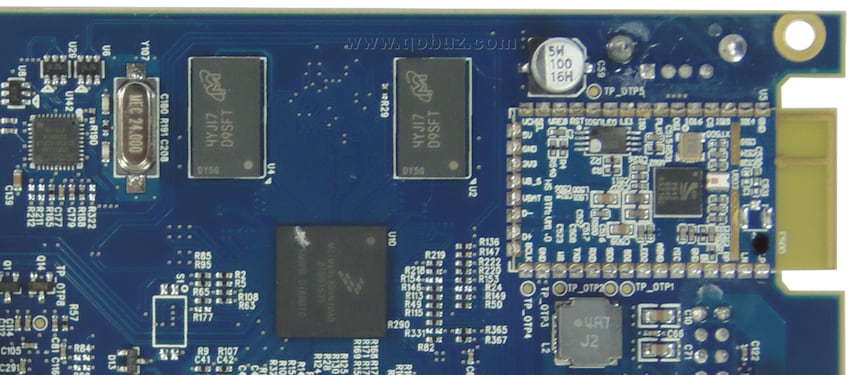
Providing power to the different sections of the Freescale MC IMX6 processor is managed by another circuit from the manufacturer, a model MMPF0100 power supply controller.
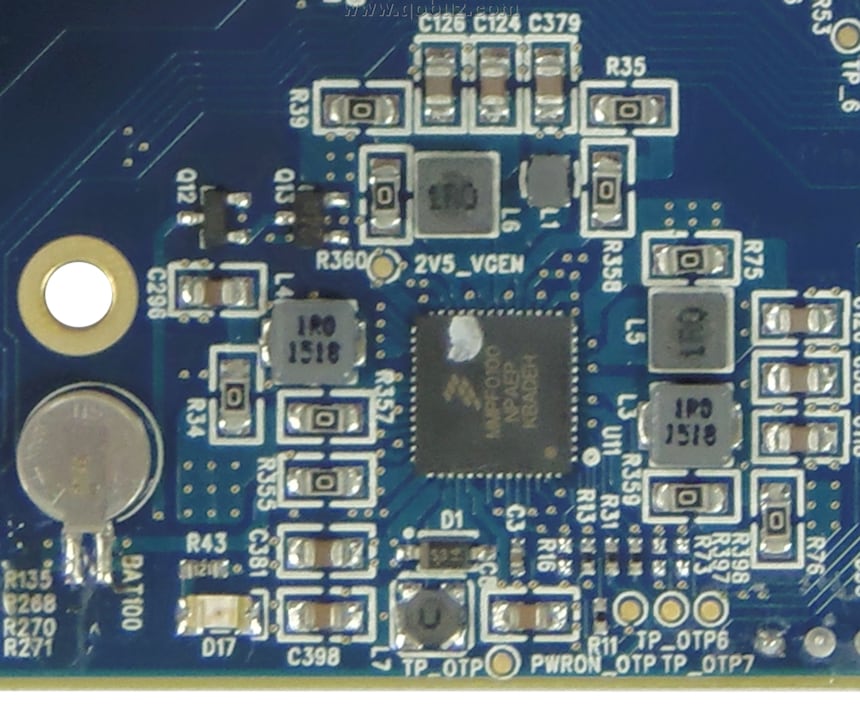
Analog signals from the Jack input are digitized to 24-Bit/96kHz by Burr-Brown PCM1803 DAC, while there is also a Texas Instruments TPA6130 amplifier for the headphone output (bottom left) .
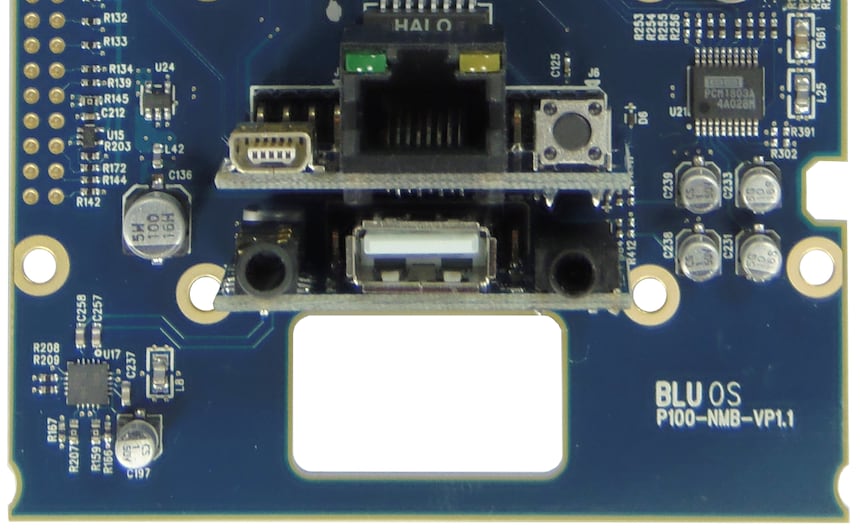
Below, the amplification chip (which uses Texas Instruments TAS5754M circuit working as a Class D switching amplifier) works directly with digital audio data (I2S bus), transforming them into PWM signals (Pulse Width Modulation, the principle of class D). Said circuit comprises two amplification channels, each of which is used to feed a loudspeaker (active bi-amplification).
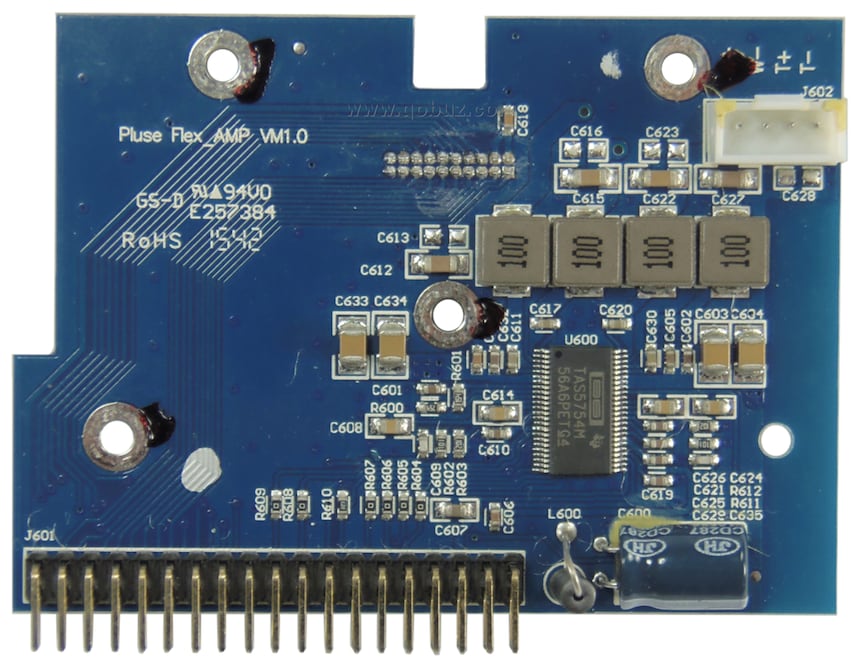
Listening
After much trial and error with running the Flex Pulse in stereo mode (there is somewhat of a lack of indication one way or another on the part of Bluesound here), our efforts are rewarded with a wonderful sound restitution on Premier livre de pièces de Clavecin by Rameau, an extract from the album Vertigo by Jean Rondeau (Harpsichord). There is an impressive and spacious sound with density and a worthy restitution on the instrument itself.
Th results are just as impressive with l'Allegro moderato from the Concerto pour violon by Tchaïkovski, interpreted this time by Patricia Kopatchinskaja (violin) accompanied by the MusicAeterna ensemble and conducted by Teodor Currentzis (Hi-Res 24-Bit/96kHz version). The small Pulse Flex speakers do indeed offer a nice sense of space and sits well with the lower ranges, although it would benefit from a little more subtlety. The violin is sharp without being too excessive. As for the growing dynamics brought by the entrance to the famous first movement, it is very well transcribed.
Coming back to the track My Sweet Lord from the album All Things Must Pass by George Harrison, the guitar is reproduced with a certain delicacy (just enough, in our opinion), while the voice of Harrison is lightly masked by the lower ranges without robbing the track of its profound spirituality.
In conclusion, the speaker Bluesound Pulse Flex is a nice speaker to listen with, capable of reproducing a wonderful bass effect and offering a wide stereo soundstage on which you can enjoy Qobuz.
To follow everything that happens at Qobuz, like us on Facebook!
If you are a constructer, importer, distributor, or agent in the field of sound reproduction, and would like to contact us, please do so through the following address: newstech@qobuz.com
If you are passionate about the contents of our Hi-Fi Guide, and would like to contact us, then please do so through the following address: rubriquehifi@qobuz.com

